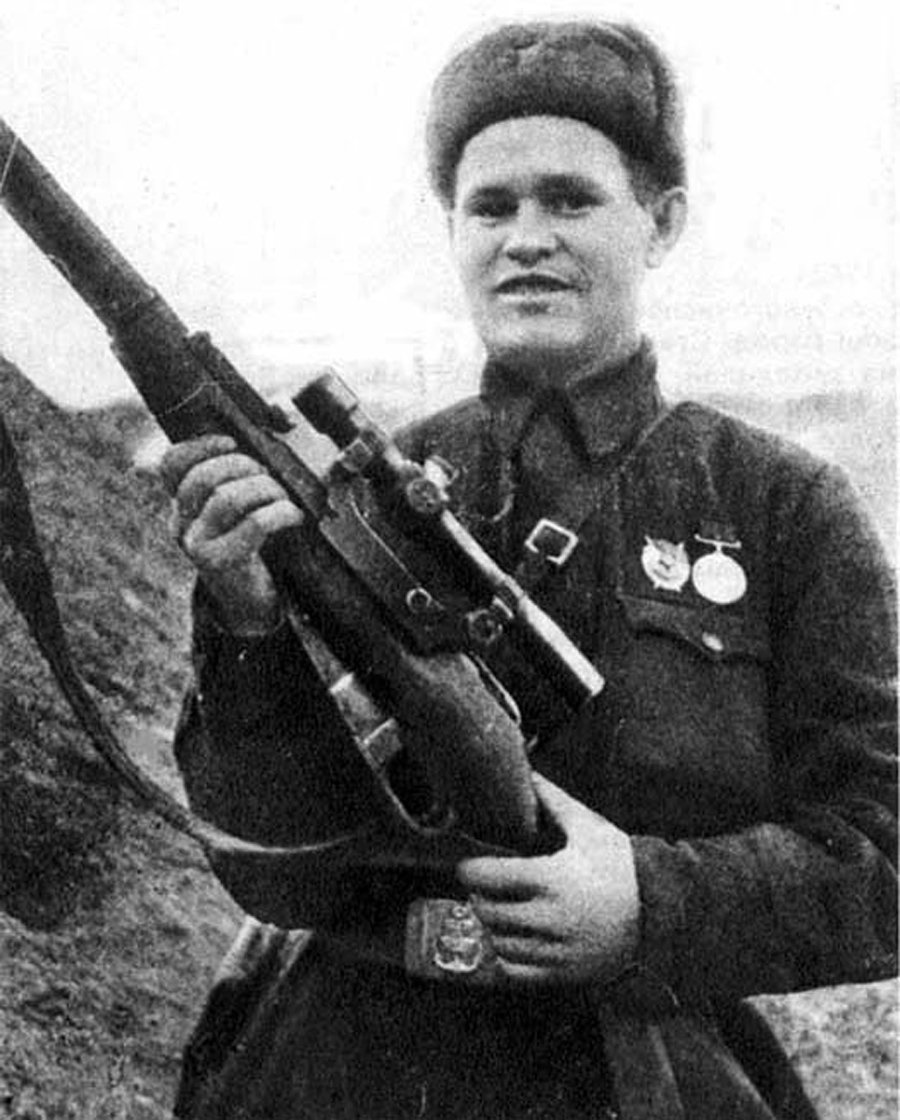Vasily Zaitsev was born on March 23, 1915 to a peasant family in the Ural Mountains of Russia. As a boy, his grandfather taught him how to hunt deer and wolves. At age 12, he brought home his first wolf. He had killed it with a single shot 20-gauge shotgun. He graduated from a technical college with a specialty in fitting. However, he ended up enlisting in the Soviet navy. He worked as a clerk. When Germany invaded the Soviet Union, he transferred to the army. He became a sniper and achieved fame during the siege of Stalingrad. He was credited with 225 kills during the battle. He developed a tactic called “Three Sixes” which called for a trio of snipers and their scouts hidden at three spots to cover a large front. In January, 1943, he was wounded in his eyes by a mortar. His eyesight was recovered by a famed ophthalmologist. He eventually returned to the army and participated in the fighting in Germany. He was awarded the Hero of the Soviet Union (the highest military decoration) and was well-known for his feats, many of which were enhanced by propaganda. His fame spread to the west when historian William Craig published his book “Enemy at the Gates”. This history of the Battle of Stalingrad had just a couple of pages about Zaitsev and his duel with a German sniper named Maj. Erwin Konig (or Heinz Thorvald in some versions), but the story was so vivid and suspenseful that it became the basis for a movie of the same name. Other historians have cast doubt on the duel and it was most likely invented by Soviet propagandists. However, the story appears in Zaitsev’s memoirs.
According to Zaitsev: The sun rose. Kulikov took a blind shot; we had to rouse the sniper’s curiosity. We had decided to spend the morning waiting, as we might have been given away by the sun on our telescopic sights. After lunch our rifles were in the shade and the sun was shining directly on to the German’s position. At the edge of the sheet of metal something was glittering: an odd bit of glass or telescopic sights? Kulikov carefully, as only the most experienced can do, began to raise his helmet. The German fired. For a fraction of a second Kulikov rose and screamed. The German believed that he had finally got the Soviet sniper he had been hunting for four days, and half raised his head from beneath the sheet of metal. That was what I had been banking on. I took careful aim. The German’s head fell back, and the telescopic sights of his rifle lay motionless, glistening in the sun, until night fell… (Alan Clark’s Barbarossa, page 245.)
Speaking of the movie “Enemy at the Gates”, we know Zaitsev was an actual person, but you might be surprised to learn that there was some truth behind the woman sniper Tania and even the little boy Sasha. Tania was an American-born Russian who returned to the home land to be with her grandparents after the invasion. When they were killed, she became a vengeance-minded partisan and ended up in Stalingrad. She apparently hooked up with Zaitsev although there is debate on whether the hook up got to the sleeping bag stage. Officially, it did. She was wounded during the latter stages of the battle, as was Vasily later. Both thought the other dead, so the Soviet government was not able to stage a royal wedding. Sasha was basically as depicted sans the relationship with Konig. His death was by hanging for espionage.
https://en.wikipedia.org/wiki/Vasily_Zaitsev_(sniper)
https://www.awesomestories.com/pdf/make/135501

0 Comments